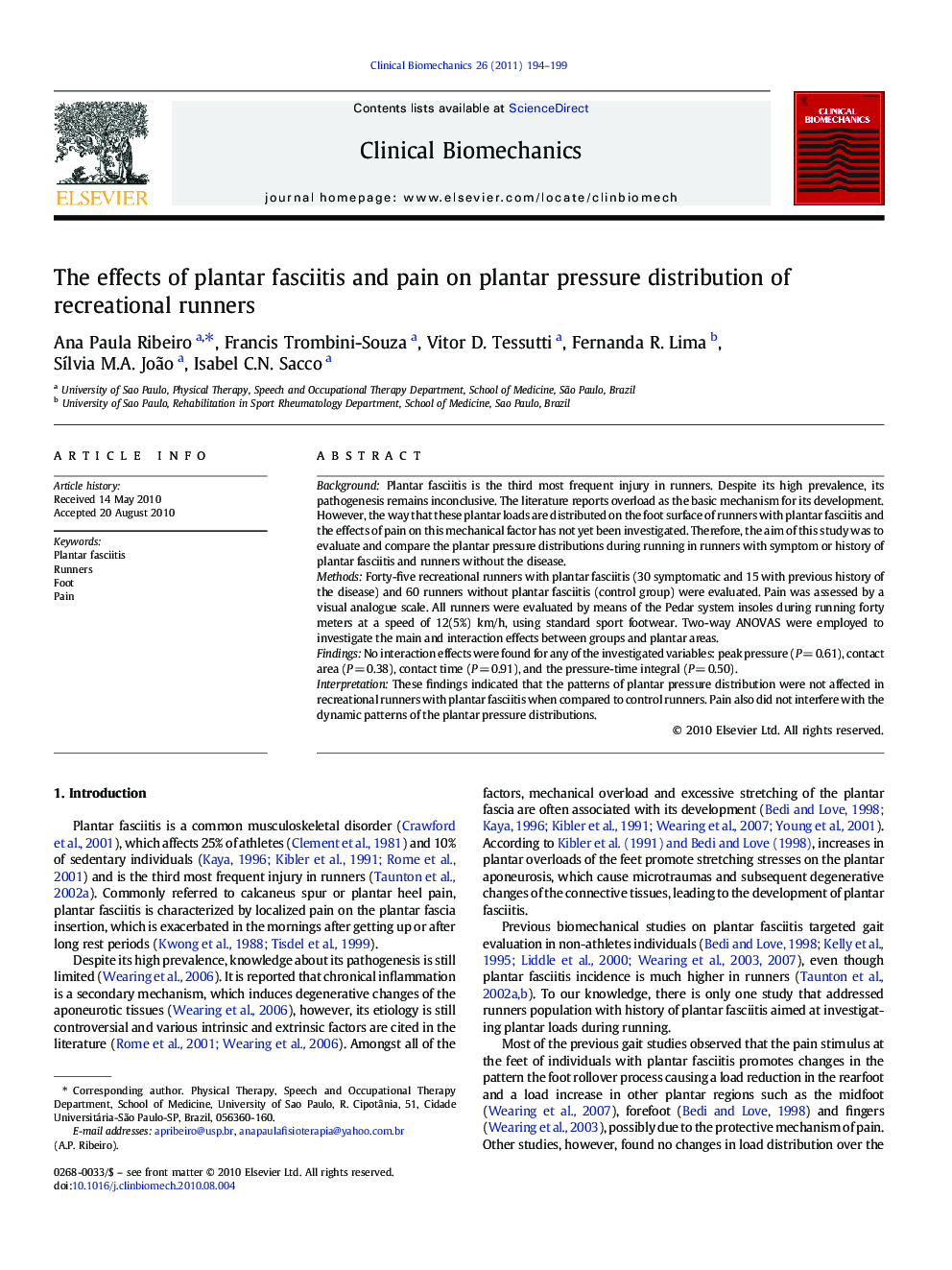| Article ID | Journal | Published Year | Pages | File Type |
|---|---|---|---|---|
| 4050871 | Clinical Biomechanics | 2011 | 6 Pages |
BackgroundPlantar fasciitis is the third most frequent injury in runners. Despite its high prevalence, its pathogenesis remains inconclusive. The literature reports overload as the basic mechanism for its development. However, the way that these plantar loads are distributed on the foot surface of runners with plantar fasciitis and the effects of pain on this mechanical factor has not yet been investigated. Therefore, the aim of this study was to evaluate and compare the plantar pressure distributions during running in runners with symptom or history of plantar fasciitis and runners without the disease.MethodsForty-five recreational runners with plantar fasciitis (30 symptomatic and 15 with previous history of the disease) and 60 runners without plantar fasciitis (control group) were evaluated. Pain was assessed by a visual analogue scale. All runners were evaluated by means of the Pedar system insoles during running forty meters at a speed of 12(5%) km/h, using standard sport footwear. Two-way ANOVAS were employed to investigate the main and interaction effects between groups and plantar areas.FindingsNo interaction effects were found for any of the investigated variables: peak pressure (P = 0.61), contact area (P = 0.38), contact time (P = 0.91), and the pressure-time integral (P = 0.50).InterpretationThese findings indicated that the patterns of plantar pressure distribution were not affected in recreational runners with plantar fasciitis when compared to control runners. Pain also did not interfere with the dynamic patterns of the plantar pressure distributions.
